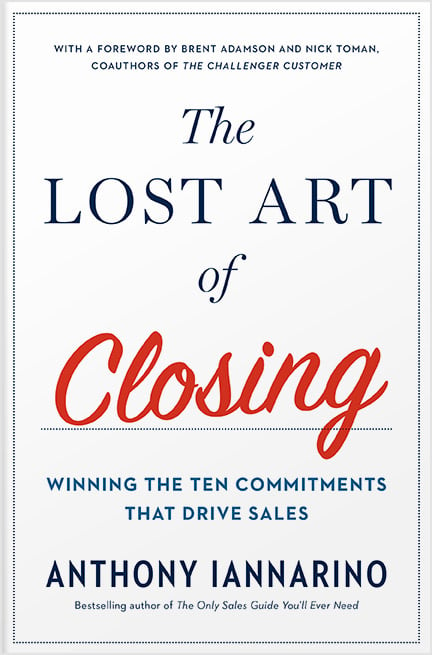One of the more challenging commitments you must gain in sales is the commitment for time. To obtain that commitment, you must prospect. You might ask yourself, “How do I prospect more effectively?” You make prospecting easier when you have a framework and a strategy that produces results. Here is what you need to prospect effectively in B2B sales.
Start Your Prospecting with a Plan
You need a plan for your territory. If your company has accounts assigned to you, you need a plan for creating opportunities, whether the accounts are prospects or existing clients. The outcome of prospecting is a meeting, and the result of that meeting, when done well, is an opportunity.
A well thought out plan eliminates many decisions that prevent salespeople from prospecting. When you have targets, you know where to focus your effort. You need not spend time trying to decide whom to pursue, because you have done the work necessary to identify your targets.
Salespeople struggle to get started because they don’t have targets or a plan they can execute. Without a plan, it is easy to do other tasks that look like work, even though they have nothing whatsoever to do with creating and winning opportunities.
Develop a Theory About Why Change
The reason salespeople pitch their company, products, and solutions when communicating with the contacts in the accounts that make up their plan is that they lack a better approach. They also fail to recognize some general concepts about buyer’s decision-making. They believe they are selling their company and its solution when they first need to sell a theory about why their contact might need to change now or in the near future.
Developing a theory is work you need to do for yourself. You need to study your target client’s industry vertical to identify the root causes of their systemic challenges. If your prospective client isn’t already compelled to do something different, you have to provide them with the impetus to do so. You should have an idea about their pain points.
Your theory is not useful unless your solution can improve your target’s performance by addressing the root causes of their systemic challenges.
Trade Value for the Commitment of Time
When salespeople fail to acquire a meeting with their dream clients, it is often the case that didn’t offer their contacts a compelling value proposition. When you ask your contacts time, you must provide them with some idea about how they benefit from the interaction.
Many sales reps ask for time to introduce themselves, their company, and their products or services. Because they offer their prospective client the opportunity to learn about them, their company, only to have the salesperson pitch them too soon, their offer is rejected, often with extreme prejudice. You can find more about Trading Value in The Lost Art of Closing: Winning the 10 Commitments That Drive Sales.No more pushy sales tactics. The Lost Art of Closing shows you how to proactively lead your customer and close your sales. 
Your theory can provide you with some ideas about what you need to share with your dream client that they would perceive as value. Go here to see what it means to create value now.
Build a Prospecting Campaign You Can Execute
At one point, prospecting was considered an activity, mostly made up of phone calls. While the telephone should be your primary tool for acquiring meetings, building an effective B2B prospecting sequences will require you use additional tools. A good campaign will also include multiple touches.
Because your target clients are not likely to pick up the phone and agree to a meeting the first time you dial their number, you need a better strategy. Calling and emailing a client every ninety-days does nothing more than teach your contacts to ignore you, since each time they disregard your call, you go away for long periods. You need a better strategy and one that ensures you are known as a value creator and a potential partner.
Your campaign might start with a series of phone calls and a voice mail message. Those early failed attempts will pay dividends later. You might follow up those calls with “no ask” email sequences (no call to action), content designed to help the B2B buyer in your target accounts to recognize that you know what’s going on in their world. You can also share where you believe they may be struggling, and how they might think about those challenges.
You’ll also weave other content that is helpful to your dream client as a way to up their willingness to give you a meeting. A campaign provides a better and more effective approach than calls alone.
Block Time to Execute Your Plan
If you don’t block time on your calendar to execute your prospecting plan, you are not going to prospect consistently enough to produce the results you’re capable of generating. There will always be tasks to fill your time, some of which your company will require of you.
Selling is made up two outcomes: 1). The creation of new opportunities, and 2). Capturing those opportunities. Everything else is merely a commentary on the two results.
Sixty minutes a day is more potent than eight full hours every month after you’ve fallen behind and have given up the weeks and months you needed to reach your goals. There is an old aphorism that goes, “If you don’t have time to meditate for an hour, meditate for two hours.” The truth in the statement is that if you don’t have time for an hour, you are in desperate need of more meditation.
If you don’t have time to prospect for an hour each day, then prospect for two hours each day. You never win an opportunity you don’t first create. If you want to harvest, you are first going to have to plant seeds. Success in sales requires commitment and self-discipline.
Be Professionally Persistent
One of the critical variables in generating results when prospecting is the need to be professionally persistent. Given a long enough timeline, your dream clients are going to change their partner. The decision to be professional persistent is what is going to allow you to continue to pursue your targets over time.
You will find and engage targets when you follow these steps, but some will take longer than others, even when you can execute a strategy like the one that makes up the first three chapters of Eat Their Lunch: Winning Customers Away from Your Competition.Win customers away from your competition. Check out Eat Their Lunch
Professional persistence demands a theory, the ability to trade value in exchange for a meeting, and a campaign you can work. It also requires you to persist in your efforts, a variable that is exclusively within your control.
If you want more—and better—opportunities, you need a professional, B2B sales prospecting approach, one that makes it certain you obtain the meetings that lead to the opportunities that result in won deals.








.jpg?width=768&height=994&name=salescall-planner-ebook-v3-1-cover%20(1).jpg)


